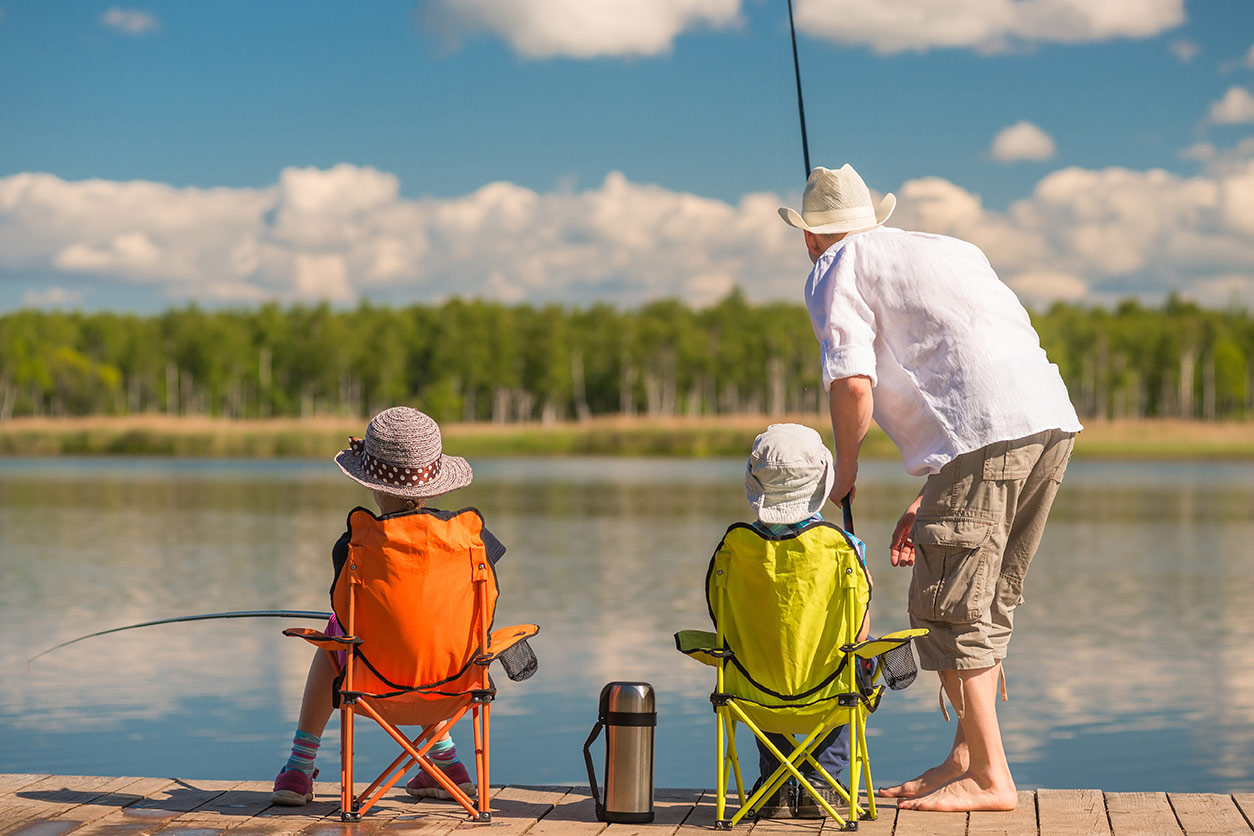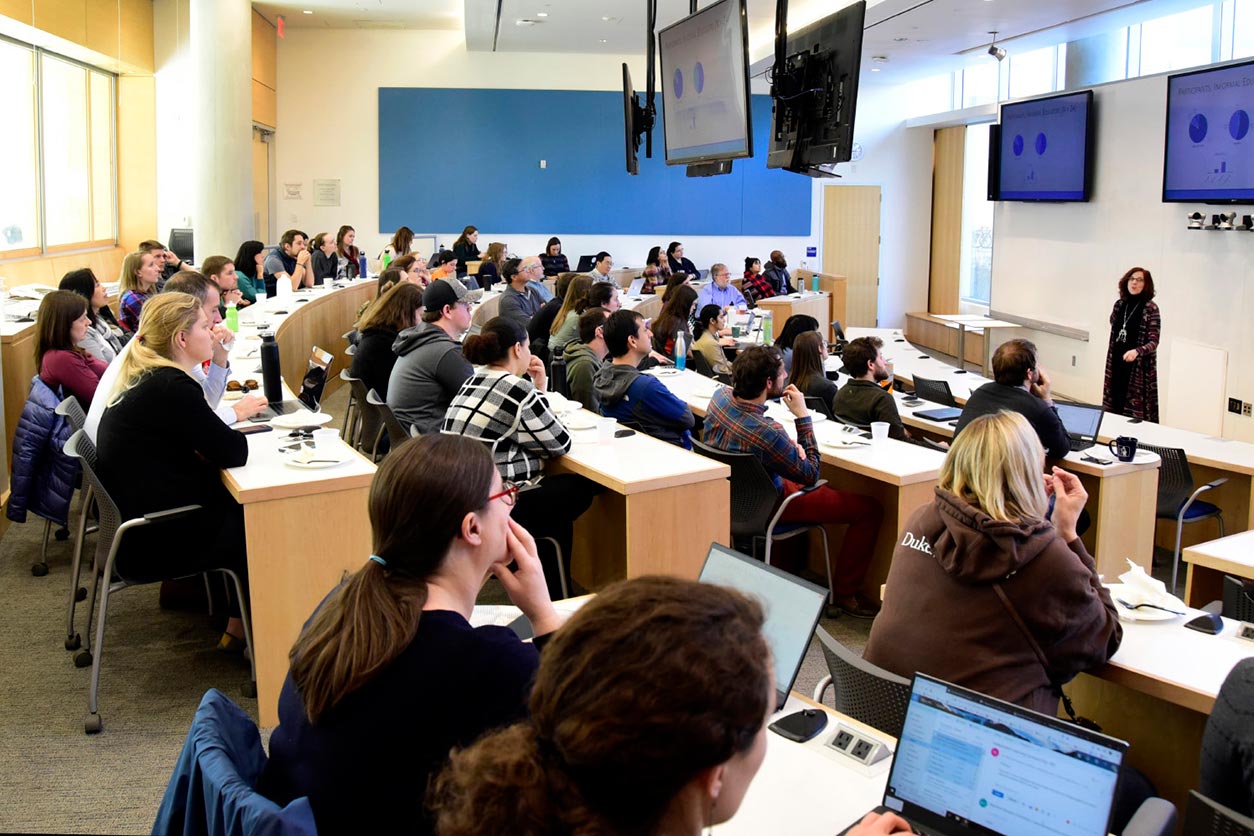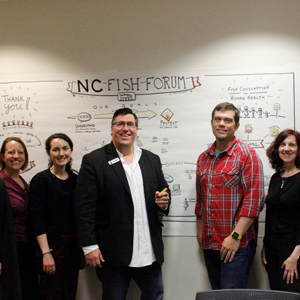“In North Carolina, we have a statewide mercury advisory and 25-site specific advisories for consumption of locally-caught fish,” said Kathleen Gray, Ph.D., at a Jan. 17 seminar. Gray leads the community engagement core at the NIEHS-funded Center for Environmental Health and Susceptibility at the University of North Carolina-Chapel Hill.
Gray shared this information with students and faculty from Duke University and employees from the North Carolina Department of Health and Human Services as part of a talk on how knowledge of environmental health and beliefs can influence consumption of contaminated fish. Her talk was part of Duke’s Integrated Toxicology and Environmental Health Program spring seminar series.
 Advisories hold important information for fishermen, whether they are fishing for sport, subsitence, or family fun.
Advisories hold important information for fishermen, whether they are fishing for sport, subsitence, or family fun.A study on warnings
 “Our results indicate that stand-alone signs do not effectively communicate the complexity of fish consumption advisories,” Gray said. “We need multifaceted outreach plans.” (Photo courtesy of Steve McCaw)
“Our results indicate that stand-alone signs do not effectively communicate the complexity of fish consumption advisories,” Gray said. “We need multifaceted outreach plans.” (Photo courtesy of Steve McCaw)All 50 states have issued advisories that warn against eating fish contaminated with methylmercury and polychlorinated biphenyls, which can have harmful effects on human health, according to NIEHS research. Typically, fish consumption advisories take the form of warning signs posted around lakes or rivers.
“We know that with these advisories, we are less effective at reaching women, nonwhite ethnic groups, and fishermen with low income or low educational attainment,” said Gray. “Yet these are the populations that we need to reach most.”
In 2016, Gray and her colleagues launched a study, not yet published, on fishermen’s understanding of fish consumption advisories. The researchers wanted answers to several questions.
- How do sport and subsistence fishermen describe their knowledge of the advisories?
- How clearly do the signs communicate information?
- What might motivate fishermen to act on the information in the signs?
Gray noted that results of a California study found that both women and men who fish prefer the term fishermen.
Focus groups reveal trends
 Gray challenged the audience to suggest all the information that should be conveyed on a fish consumption advisory. (Photo courtesy of Steve McCaw) (Photo courtesy of Steve McCaw)
Gray challenged the audience to suggest all the information that should be conveyed on a fish consumption advisory. (Photo courtesy of Steve McCaw) (Photo courtesy of Steve McCaw)Using focus groups, the team presented prototypes of advisory signs to nearly 40 fishermen and found some interesting trends. Sport fishermen were aware of the signs, but did not think the warnings applied to them specifically. However, subsistence fishermen did think the advisories were relevant, but were mostly unaware of them. In contrast to sport fishermen, they were receptive to the messages and indicated willingness to change their behavior in response.
The researchers discovered that the information presented was confusing to both groups and unlikely to change behavior, even when participants were told that the advisories applied to anyone consuming locally-caught fish.
Gray and her team did discover family health was an important motivator of behavior. “We needed to make connections to the important vulnerable populations in their lives, such as pregnant women and children,” she said. “When we asked them to think about how the advisory might apply to their children, grandchildren, nieces, or nephews, they found the advisory information more relevant.”
Informal educators may hold the key
Next, Gray studied the educators — such as park rangers or local government representatives — who convey health messages through informal educational settings, including their levels of environmental health literacy. “Environmental health literacy refers to knowledge and skills that prepare people to make health protective decisions using available environmental data,” she explained.
 Gray addressed a room full of students and faculty at Duke University. (Photo courtesy of Steve McCaw)
Gray addressed a room full of students and faculty at Duke University. (Photo courtesy of Steve McCaw)Gray found that the more environmental health knowledge an educator had, the more likely they were to talk about the fish consumption advisories. However, these knowledgeable individuals tended to have less direct contact with fishermen. Those educators who engaged with the highest number of fishermen were less familiar with environmental health concepts and less likely to communicate about advisories.
“The implications from this study are that local government and wildlife agency educators are well-positioned to address advisories, but they may need professional development on environmental health concepts,” Gray said. “We also need effective teaching and evaluation skills for informal learning contexts to increase understanding of susceptibility and severity of health effects.”
Citation: Tan ML, Ujihara A, Kent L, Hendrickson I. 2011. Communicating fish consumption advisories in California: what works, what doesn’t. Risk Anal 31(7):1095−1106.
(Sheena Scruggs, Ph.D., is the Digital Outreach Coordinator in the NIEHS Office of Communications and Public Liaison.)









